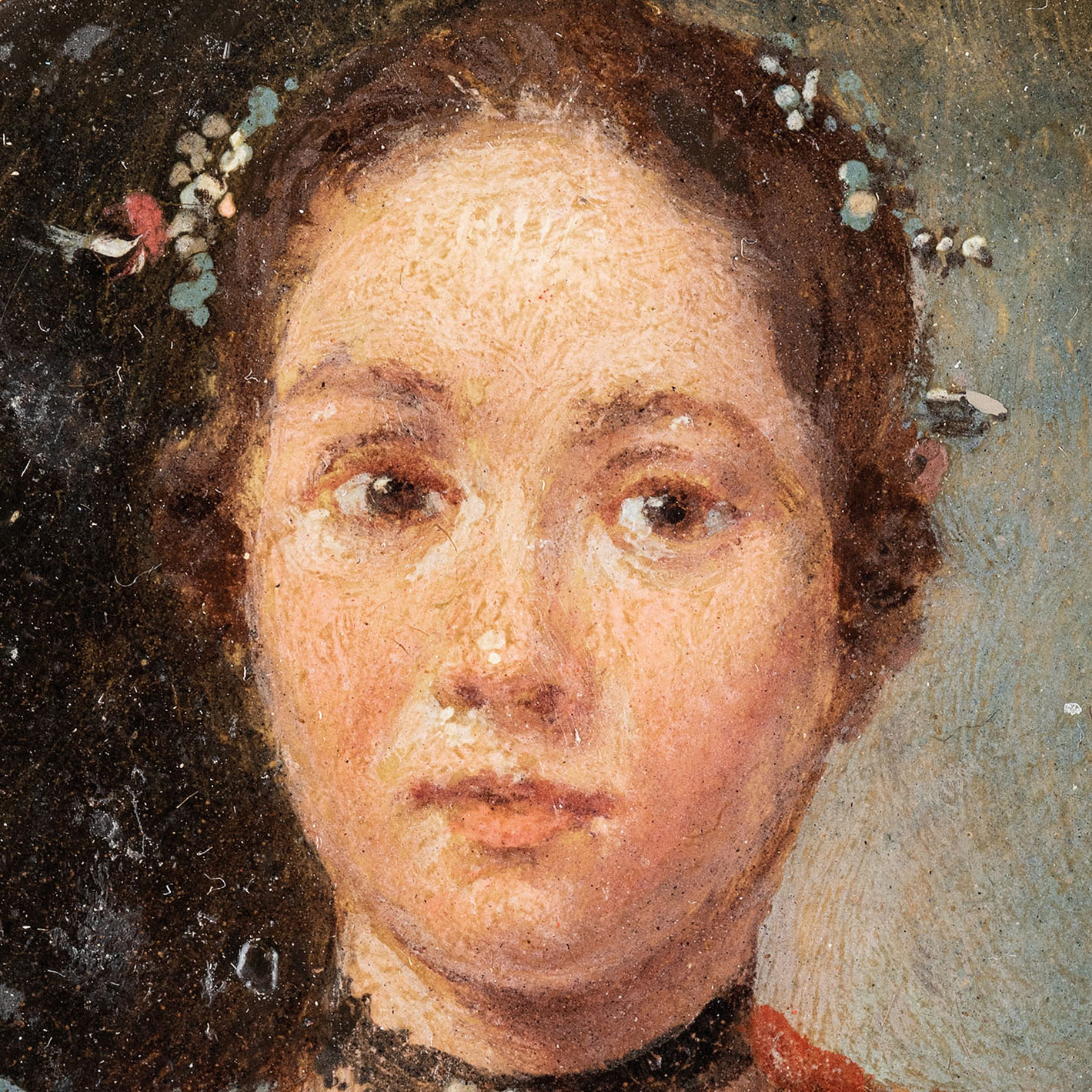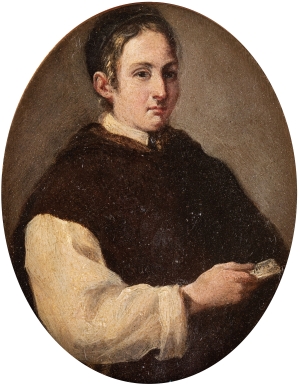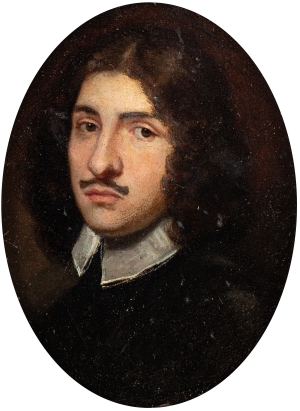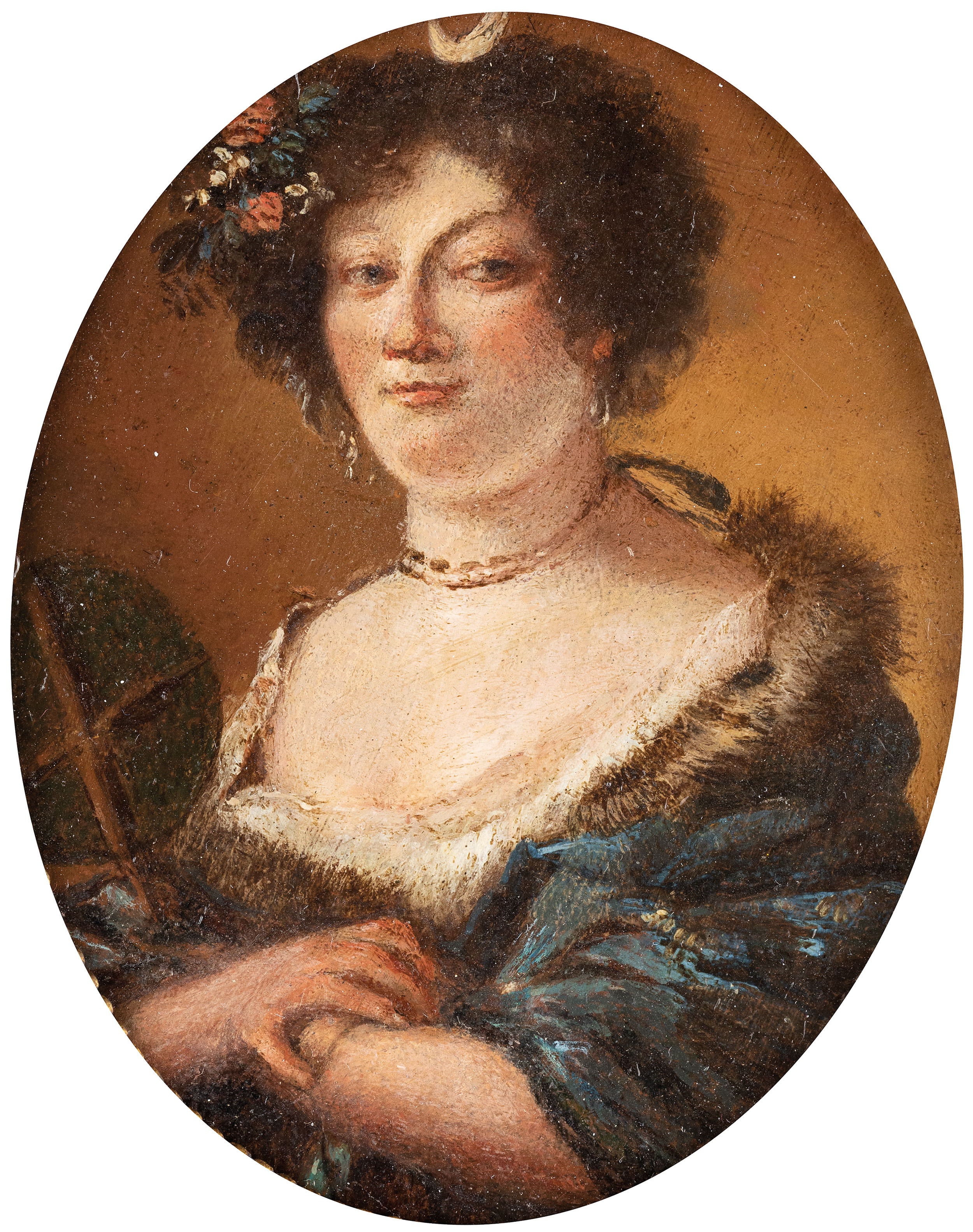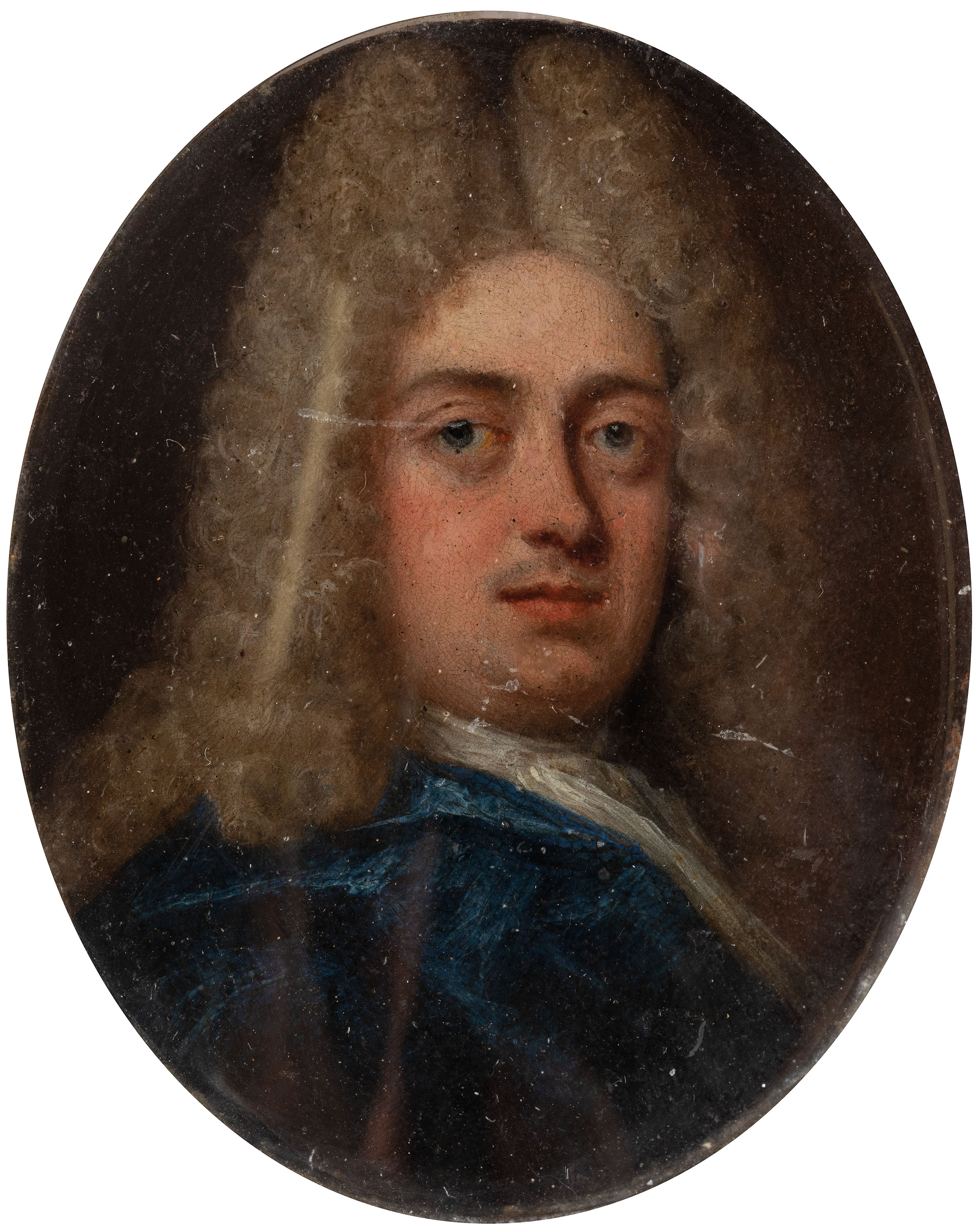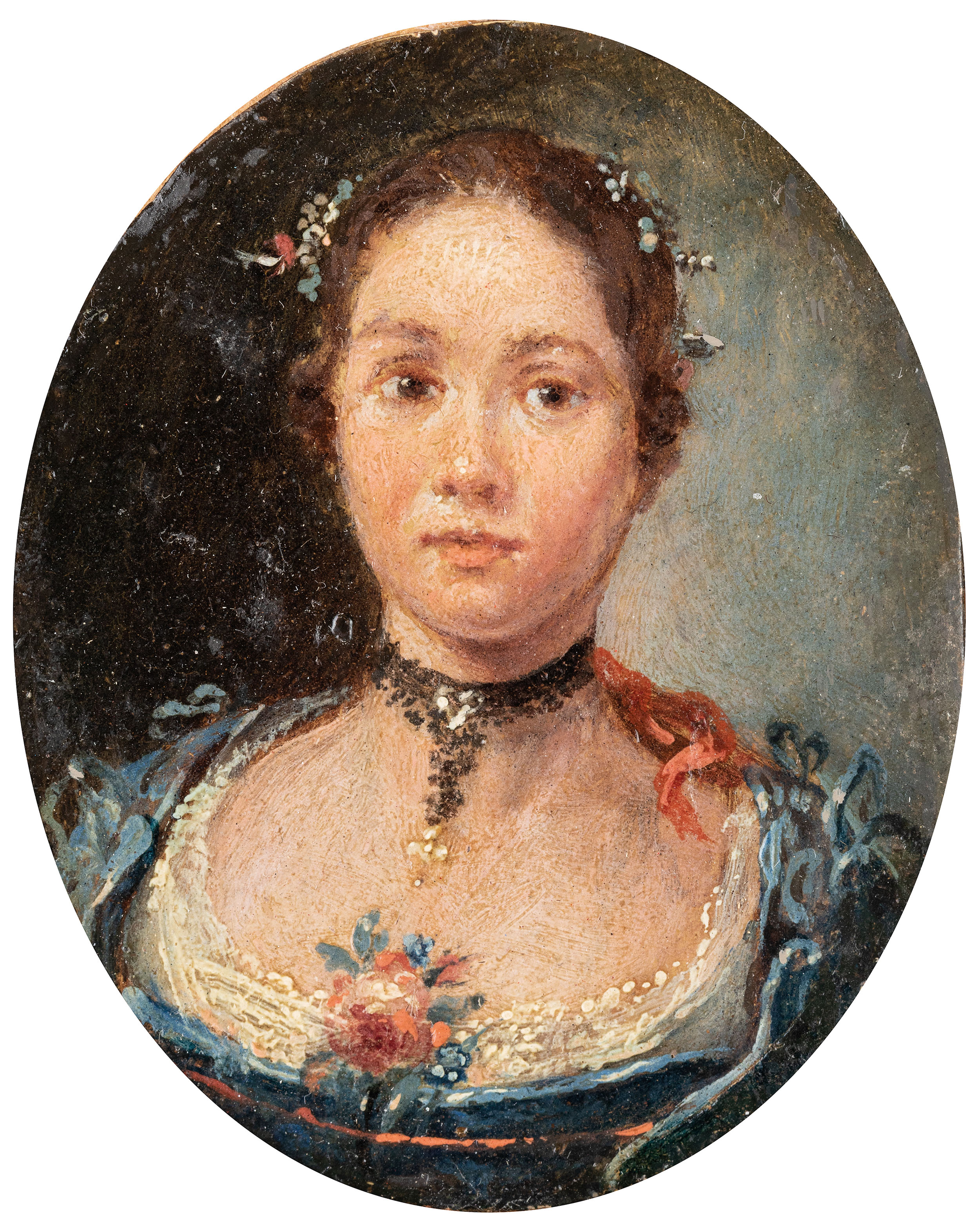Judged a minor genre, the miniature as a small portrait played an important role from an artistic point of view, with social and sentimental implications that were by no means marginal. However, it was probably its confidential character that led to the lack of attention from ancient sources, which were also distracted by genre hierarchies as well as by ‘fare grande’. Nevertheless, the art of portraiture denotes a precise awareness of man as an individual and it is perhaps no coincidence that miniature painting has its origins in the Renaissance period and in northern areas, initially in France and a few generations later in the Flemish area, in the workshops of Bruges and Ghent, which in turn introduced the fashion to England. In Italy, a country where portraiture was strictly allusive to the social conditions of the sitter and initially subordinate to the imitation of classical age profiles, during the 16th century it was dedicated to a small fraction of society. It is in Lombardy, however, that we observe the first cases in which ‘etiquette’ is lacking and artists such as Giovanni Battista Moroni from Bergamo are sought after by the bourgeois classes, eager to express their good taste, professional skills and economic prosperity dictated by work.
Returning to the production of the small portraits, their purpose was ‘sentimental’, aroused by the wish to give or receive the image of a loved one, or to allude to a promise of marriage. In both cases and by virtue of their small size, these works seem intended to be kept on one’s person or in a small study. This implied a considered description, in which verisimilitude and sprezzatura prevailed, to emphasise the ‘familiarity’ with the effigy. The execution, on the other hand, was not the prerogative of specialists as it was during the 19th century, e.g. the ‘Medici Portraits’ destined for Cosimo I’s Studiolo were executed by Bronzino, but it is now well established that painters, even of great name, devoted themselves to composing works in small scale, and during the 17th century there was a real fortune in the genre.
From a technical point of view, however, the authors of the Baroque period preferred the precious copper supports, but works on tablet or parchment are not rare, while during the 18th century the use of ivory painted in tempera or watercolour began, appreciated for its translucent transparency effects although used sparingly due to the high costs and the difficulty of finding the material. However, there is no doubt that miniature portraits tell not only a particular story in the history of art, but also an extraordinary history of customs and culture, and their study opens up unexpected avenues of research. Suffice it to think of the mysterious Gaspare Passerotti, son of the famous Bartolomeo and mentioned by Malvasia as ‘egregious in miniatures’, and what to think of the works referable to the narrow Carracci circle, not to mention the portraits of the Roman or Venetian school, which suggest references to famous masters such as Ottavio Leoni or Girolamo Forabosco.
In the Genoese auction of Old Masters Paintings on 29-30 November 2022, a corpus of more than fifty lots will be sold. They tell the great story of memory in small format (113 – 166).

